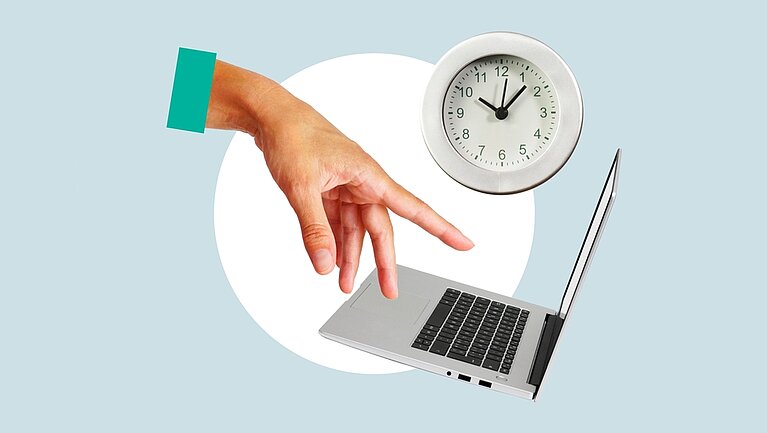What do you do when at the end of a workday there are still plenty of urgent tasks to complete? Most people put in overtime in this situation and invest their valuable free time. How about being so productive instead, through good time management, that you complete all tasks on time and can thus go into your well-deserved end of the day relaxed every day?
If you want to improve your time management, you first need some stamina. You should test different methods and apply them consistently over several weeks to find out which one suits you best. Often, the greatest effect comes from combining several methods.
If you master time management, you will benefit in many ways:
- Higher productivity
- Less stress
- More time for yourself, family and friends
- Better work-life balance
Below you will find an overview of four well-known and proven time management methods, from which you can develop your own time management mix.
The Eisenhower Principle
The Eisenhower method goes back to U.S. President Dwight D. Eisenhower, who said in a famous speech, "I have two kinds of problems, the urgent and the important. The urgent ones are not important, and the important ones are never urgent."
Inspired by these words, Stephen Covey developed the Eisenhower Principle: a time management method that allows you to prioritize the tasks at hand according to importance and urgency. To prioritize the tasks, the so-called Eisenhower matrix is used. To do this, you need to sort all tasks by urgency and importance:
- A-tasks, are both important and urgent. You should do them as soon as possible.
- B-tasks, are urgent but unimportant. Delegate them further, if possible.
- C-tasks, are important, but not urgent. Create a reminder to do them in time.
- D-Tasks, are neither important nor urgent. You should cross them off your to-do list. They are nothing but time wasters.
Eat that frog
Imagine you were forced to eat a frog. You'd probably want to get it over with as quickly as possible. This is exactly the approach the "Eat that frog" principle takes when it comes to managing your workday. This time management method is adapted from a famous quote by Mark Twain: "Eat a live frog first thing in the morning, and nothing worse will happen to you the rest of the day."
"Eat that Frog" is an invitation to you to do the most difficult and important task of the day first thing - before you get busy with anything else. The advantages of this method:
- You have already mastered the most difficult task.
- You are proud of yourself for overcoming.
- You have your head free for other tasks.
- You have the good feeling of having worked on something important instead of doing trivial odds and ends.
- It gives you momentum and sets the stage for the rest of the day.
The 10-10-10 Method
The 10-10-10 method helps you make faster and better decisions. The 10-10-10 method is about asking yourself every time before you make a decision: What are the consequences in...
- 10 minutes?
- 10 months?
- 10 years?
This comparison helps your brain to get enough distance and a better perspective. With this "objective" view, it will be easier for you to identify and weed out unimportant tasks.
Pomodoro Technique
In this time management method, the planned or available time is divided into long and short sections. These usually consist of a repetition of 25 minutes of concentrated work and 5 minutes of break. You can find detailed instructions in the blog post "More productive with the Pomodoro technique".












